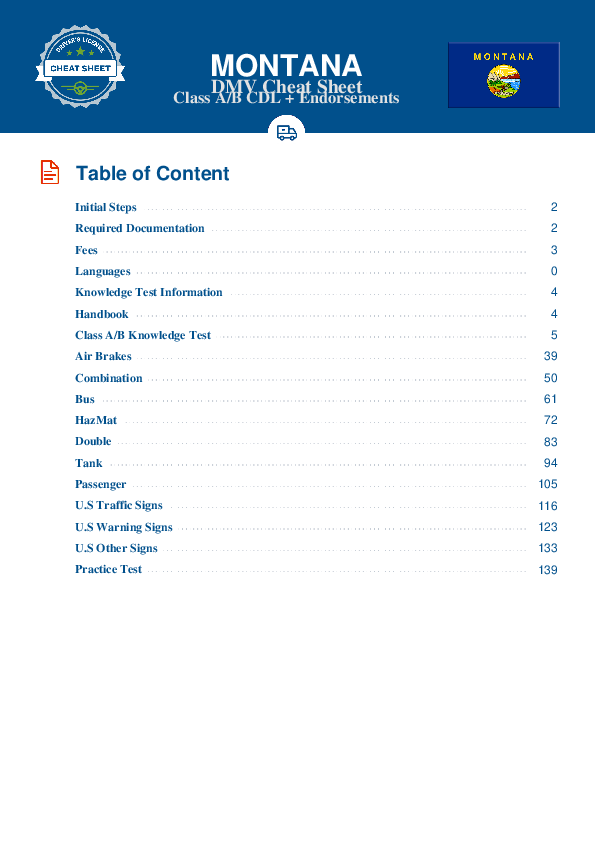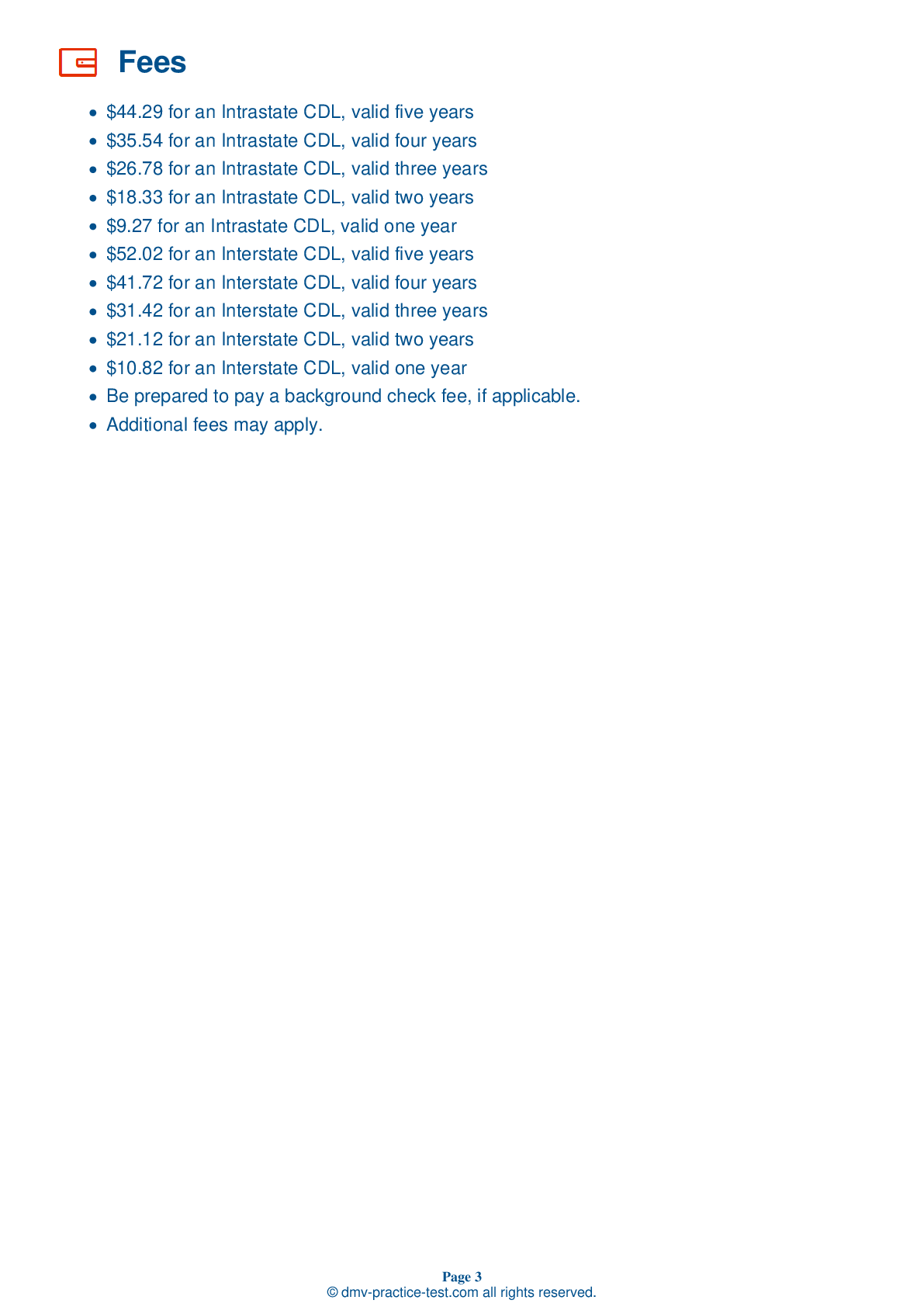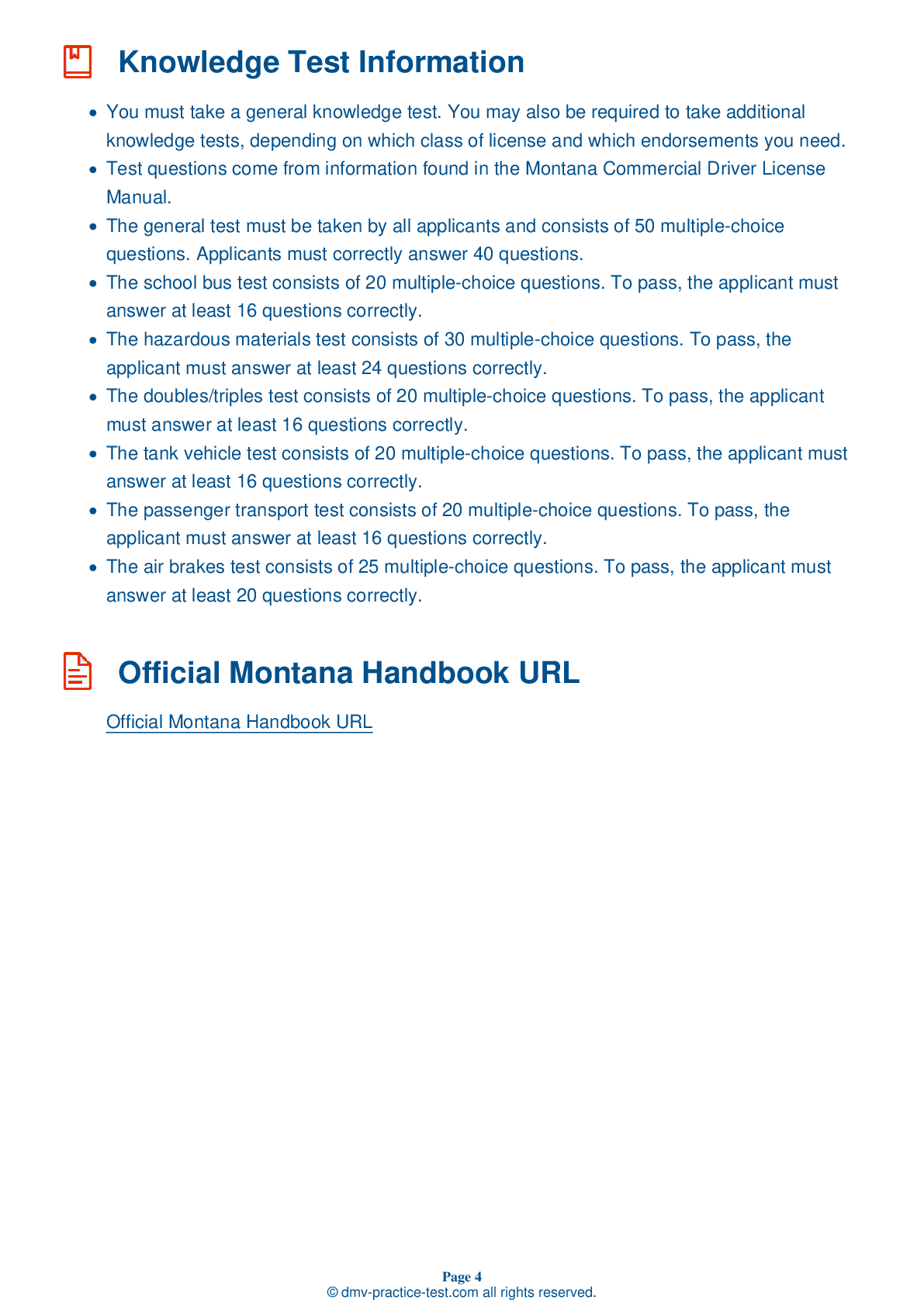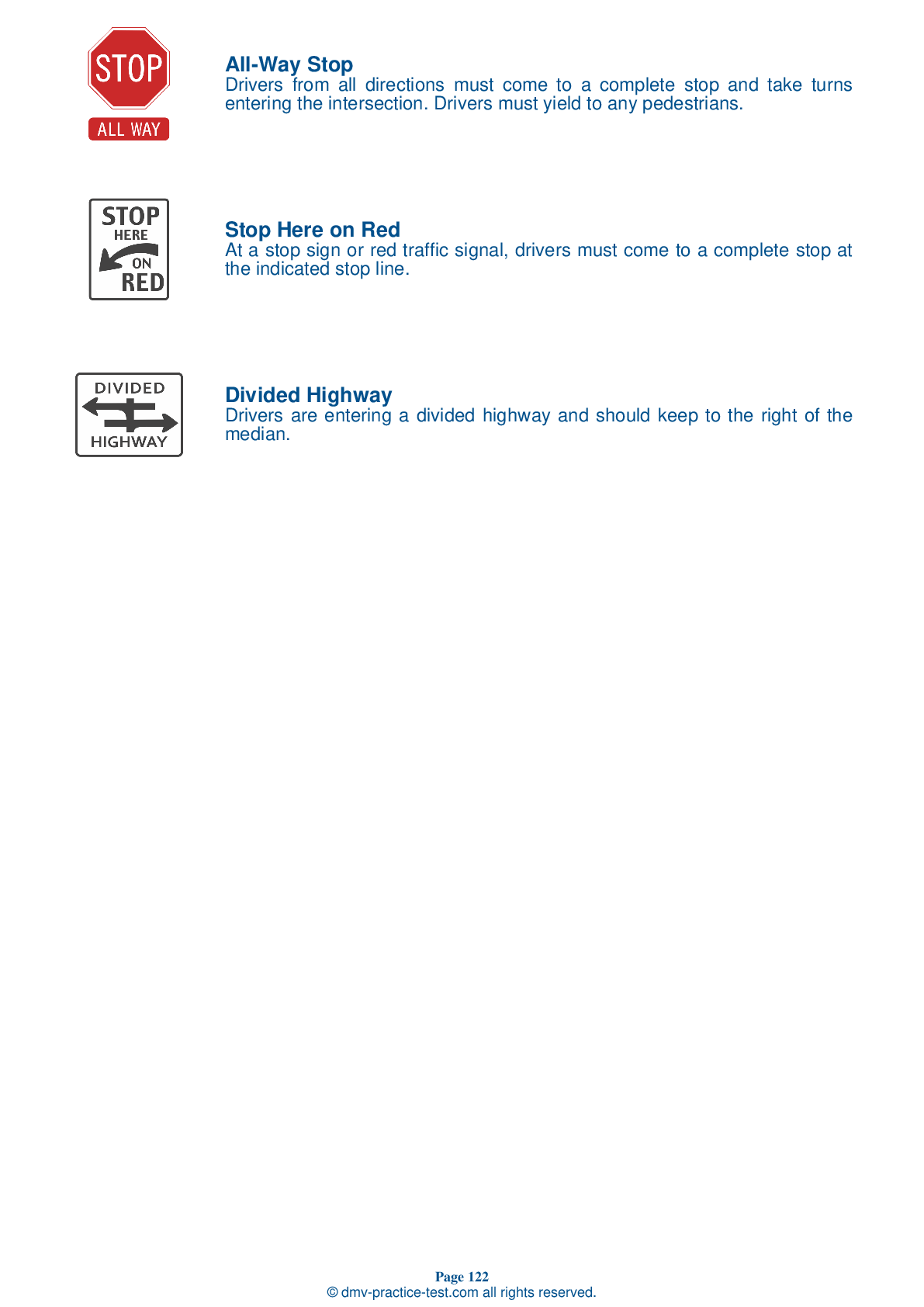Knowledge Test Class B #1
Class B Driving Test | Montana 2025 #1 Page 5 of 7
Train for FREE online with our Montana class B license test. The official exam test consists of several obligatory parts, with all of them checking your knowledge of different blocks of road rules. If you need to obtain a MT CDL class B permit in 2025, practice as much as possible. Free sample tests published on our website will help you check and improve your knowledge and boost your grades. Please bear in mind that CDL class B requirements may vary from state to state.
50
40
20
29 . When traction is poor, a driver should accelerate slowly:
To be the last vehicle through an intersection.
Speeding up too quickly on a road with poor traction could cause a driver to lose control of their vehicle. In conditions that cause poor traction, a driver should accelerate especially smoothly and gradually.
30 . If driving through flowing water or a large puddle, you should:
It is best to avoid driving through large puddles or moving water. If there is no way to avoid driving through water, you should slow down, shift into a low gear, and gently apply the brakes. Pressing linings against the brake drums or discs will keep water, mud, silt, and sand from getting inside the brake mechanisms.
31 . On a truck with air brakes, the braking system’s air compressor:
Cleans the brakes.
In an air brake system, the air compressor pumps air into the air storage tanks. The air compressor is controlled by the air compressor governor.
32 . When exiting your vehicle, you must maintain ____ with the vehicle at all times.
Two points of contact
When exiting your vehicle during the basic vehicle control skills test, you must face the vehicle and maintain three points of contact at all times. If your testing vehicle is a bus, you must maintain contact with the handrail. Exiting the vehicle incorrectly may result in automatic failure of the basic control skills test.
33 . Tie-downs are used to:
On flatbed trailers, cargo must be secured by tie-downs to keep it from shifting or falling off while the vehicle is in motion. Tie-downs may also be used to prevent cargo shifting in closed vans. Shifting cargo could affect the handling of a vehicle.
34 . Stopping distance can be affected by:
Traffic.
Factors that can affect your vehicle's stopping distance include driving speed, the vehicle's weight, and the slipperiness of the road surface.
35 . Why are roads especially slippery right after it begins to rain?
Tires are not usually designed to drive in rain.
In rainy weather, roads are often at their most slippery when the rain first begins to fall. Fresh rainwater mixes with oil and grease on the road to form a slick film. As the rain continues, this mixture will eventually wash away.
2025 Montana | Frequently Asked Questions
A CDL Class A license in Montana is defined as a commercial driver's license permitting the holder to operate any combination of vehicles with a Gross Vehicle Weight Rating (GVWR) of 26,001 pounds or more, provided the GVWR of the vehicle(s) being towed is over 10,000 pounds. It covers vehicles like tractor-trailers, truck and trailer combinations.
A Class A CDL license in Montana allows you to operate vehicles such as tractor-trailers, truck and trailer combinations, tank vehicles, and livestock carriers. It covers any combination of vehicles with a Gross Vehicle Weight Rating (GVWR) of 26,001 pounds or more, provided the towed vehicle(s) is over 10,000 pounds.
To obtain a Class A CDL license in Montana, you must be at least 18 years old (21 for interstate driving), possess a valid Montana driver's license, pass a vision test, and successfully complete both a written knowledge test and a skills test which includes a pre-trip vehicle inspection, a basic vehicle control test, and an on-road driving exam.
In Montana, you must be at least 18 years old to qualify for a Class A Commercial Driver's License (CDL) for intrastate driving (within Montana only). However, to drive interstate (across state lines) or carry hazardous materials, you must be at least 21 years old.
Endorsements are not required for a Class A CDL license, but they provide additional driving privileges. For instance, you may need a Hazardous Materials (H) endorsement to haul hazardous freight, a Tank (N) endorsement to drive tank vehicles, or a Passenger (P) endorsement to transport passengers. Each endorsement requires passing a specific knowledge test.
The Class A CDL skills test in Montana includes three sections: a pre-trip vehicle inspection to ensure the vehicle is safe to drive, a basic vehicle control test to verify your ability to control the vehicle, and an on-road driving exam to assess your ability to drive the vehicle in various road and traffic conditions.
Yes, there are limitations imposed on Class A CDL license holders. Some limitations or restrictions may include: not being permitted to operate a manual transmission if you passed your test in an automatic vehicle, not being allowed to drive a school bus without the proper endorsement, or being required to wear corrective lenses while driving if it's indicated on the license.
In Montana, the written Class A CDL test is primarily administered in English. This is in line with Federal regulations requiring all commercial drivers to read and speak English sufficiently to converse with the general public, understand highway traffic signs and signals, respond to official inquiries, and make entries on reports and records.
Yes, in Montana, accommodations can be made for the Class A CDL written test if you have a disability. You'll need to provide documentation of your disability and specify the type of accommodation needed. It's recommended to contact the Montana Motor Vehicle Division beforehand to ensure all necessary arrangements are made.
Yes, if you don't pass the Class A CDL written test in Montana, you can retake it. However, you must wait at least one day before attempting the test again. Keep in mind that each retest may involve additional fees. It's recommended to review and study the areas you struggled with before retaking the test.



